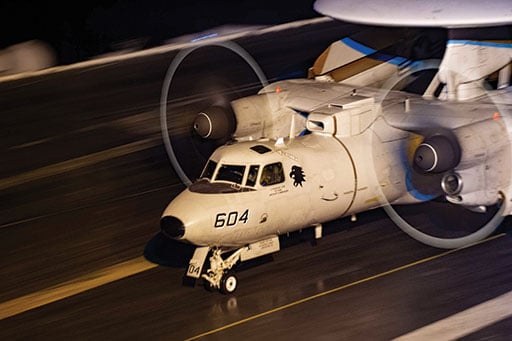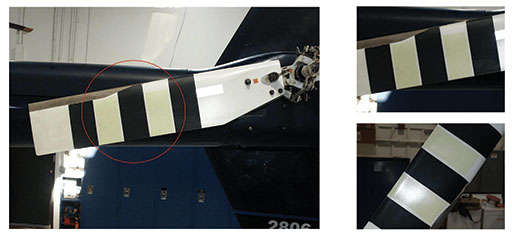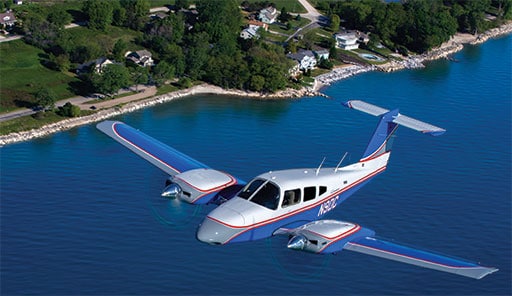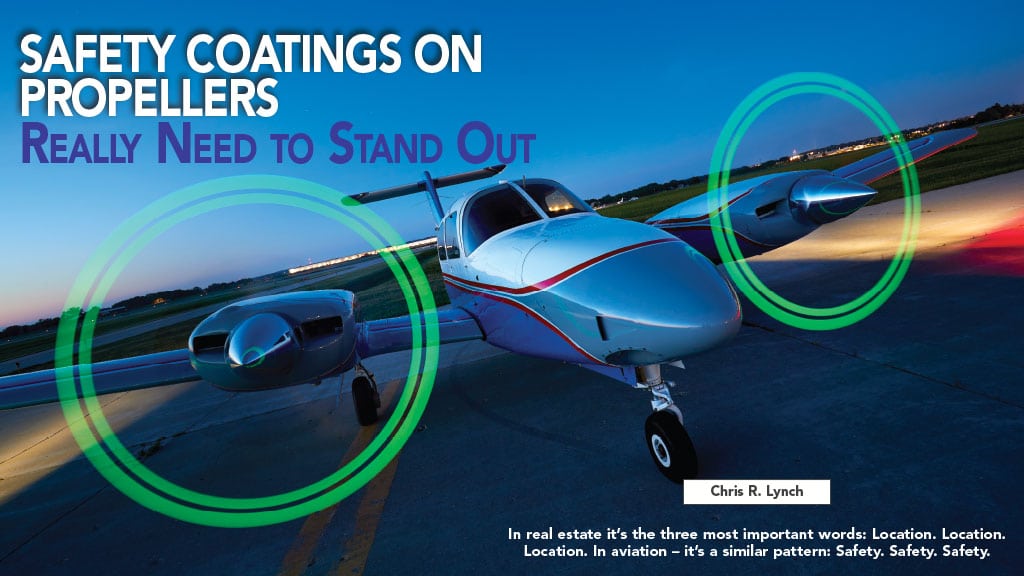This is an industry that goes to such extreme (and vital) safety efforts; from aircraft ground de-icing to lighted and marked runways; from radio altimeters to regularly scheduled ‘A’ – ‘D’ maintenance checks; from traffic advisory systems to terrain altering ones; and even pre-flight checklists, exterior walkaround inspections and weather forecasting. Some planes are now equipped with onboard airframe parachute systems – not for the pilot or passengers – for the plane itself. In essence, the industry has always focused on the fact that there can’t be enough effort, attention and technology devoted to safety.
Then why is it, almost annually, there are severe injuries and fatalities from propeller strikes to individuals caught up in an aircraft’s flightline?
• In 2019 a Florida woman lost her right hand and two toes when a propeller blade hit her as she was helping prepare for a take-off.
• That same year a Louisiana woman was seriously injured when she walked into an air-plane propeller at a small airport at night.
• In 2018 a Cleveland-based pilot was killed by an airplane propeller when he was stuck in the head.
And it’s not just passengers or the unknowing public. Since the 1990s, the United States Department of Labor’s Occupational Safety and Health Administration (OSHA) has tracked more than a dozen severe flightline injuries/fatalities by aviation maintenance personnel.
According to the Aircraft Owners and Pilots Association (AOPA) Air Safety Institute, injuries or fatalities related to crew, ground personnel, passengers, or bystanders walking into a turning prop are reported almost every year. Fortunately, adhering to proper safety precautions can easily prevent these incidents. Here are several safety considerations to ensure greater propeller safety on the ramp:
• Always treat the propeller as if the ignition is on.
• Never attempt to load or unload an airplane with the engine running.
• Make sure your passengers understand areas to avoid.
“Safety should be a main concern for everyone in the industry, not just pilots and operators. I particularly believe that it’s the duty and obligation of those on the MRO side to make sure their customers know that products such as AfterGlo coatings and other safety enhancing upgrades are available for their aircraft (and helicopters)” according to Dave Coleman, president, Coleman Jet Solutions, and a former executive with Duncan Aviation, one of the largest MROs in North America.
Even if the customer declines to apply it, there is value in the conversation you are having with your customer regarding the benefits of the product. At the end of the day, we want our customers and their passengers to be safe and come back and do business with us. Ironically, it’s an opportunity for the MRO to generate additional revenue by suggesting and applying safety propeller coatings.”
And he should know. Growing up in an aviation family, Coleman related how his father told a story that in the 1970s one of his employees was severely injured by a rotating propeller while on the job. Coleman was repeatedly instructed by his father to be alert on the flightline — and to this day is cautious around propellers. Coleman became exposed to the AfterGlo safety coating (a Photoluminescent Paint System) when working on his own plane, a restored 1982 Piper Turbo Seminole. Utilizing the capacity at Duncan, he was able get his aircraft’s exterior painted between other Duncan projects.

He was trying out a new SKYscapes Next Gen basecoat/clearcoat system from Sherwin-Williams Aerospace, when he was reviewing one of the brand’s catalogues in the ‘Defense Coatings’ sections. There he saw the availability of the safety coating AfterGlo system, originally commissioned by the U.S. Navy through Defense Holdings, Inc. (DHi). DHi partnered with Sherwin-Williams to develop the paint that could be applied to propeller tips. The Navy wanted it for use on aircraft carriers, where it would illuminate prop tips and give the visibility needed to prevent personnel from inadvertently walking into a moving prop.

The Navy converted all its E-2/C-2 aircraft to this propeller paint scheme in 2008 following near-ly five years of successful research, development, and testing. The aerospace-grade photoluminescent (PL) paint is applied to the blades and blade tips of helicopter main and tail rotors and aircraft propeller blades to aid personnel in avoiding injury or death, particularly in low-light situations.
The initial application of this paint was on the Navy’s E-2C/D carrier-based aircraft to help save the lives of men and women who must work at night in the vicinity of rapidly spinning propel-ler blades on aircraft carrier flight decks. The PL paint is required for use on U.S. Navy aircraft as well as the aircraft in numerous foreign militaries. In addition to the work with the U.S. Navy and Hartzell Propeller (the latter which in 2010 signed the first agreement with DHi approving the PL paint on its propellers), the paint has been applied to helicopter main and tail rotors and DHi is in discussions with several OEMs, fixed-wing aircraft builders, propeller manufacturers and MRO’s regarding adoption of the paint for their aircraft and propellers.
The AfterGlo solution combines a revolutionary, long-lasting, ultra-bright, non-radioactive PL material with a high-quality aerospace coating to dramatically improve propeller blade visibility under all lighting conditions. The application maximizes visibility, material adhesion, durability, wear resistance and ease of installation without compromising propeller/rotor aerodynamic performance or aircraft detection. It is also compatible with Night Vision Devices.
“The phosphors in the paint absorb a broad spectrum of UV energy (200nm to 450 nm) from natural and artificial sources of light, which charges the electrons in the orbital structure; causing them to emit photons,” explained Richard Martin, DHi’s president and CEO. “The material will then recharge itself and will do so for years. ‘Pursue the minimization of propeller strikes’; that’s the actual statement of work from the Navy when looking to have this paint system developed,” added Martin. “My understanding is that the long-term effectiveness of it is such that in the dozen or so years we’ve provided this to the Navy, there hasn’t been one fatality, or even serious injury that we’ve heard of, recorded on a flight deck.”
AfterGlo is not a difficult process to apply — in fact it comes complete in kit form and oftentimes Naval personnel simply apply it to the propeller tips of aircraft when they are hangered or on the flight deck.
“We’re honored to work with DHI on such a significant aviation safety initiative,” said Julie Voisin, global product manager at Sherwin-Williams Aerospace Coatings. “The coating system was originally designed for improved visual acuity of stationary and rotating objects in night and low-light operations. In addition to propeller blades, it can also be used for plane dock doors, tie-down chains (so people don’t trip), winglets and even wheel chocks. We developed the paint process and manufactured the system which includes a white polyurethane basecoat, followed by the photoluminescent (PL) layer topped with a clearcoat. The three-part system also provides excellent hardness and impact resistance. It is typically applied using a high-volume, low-pressure HVLP gravity feed gun,” added Voisin.

“The product is a true win-win. This is an opportunity for the MRO to serve the customer, demonstrate that they care, while also adding to the bottom-line,” concluded Coleman. “It’s not at an overly time-consuming or highly technical process. It also differentiates your facility from the others during the estimating process — because you can’t put a price on safety.”
